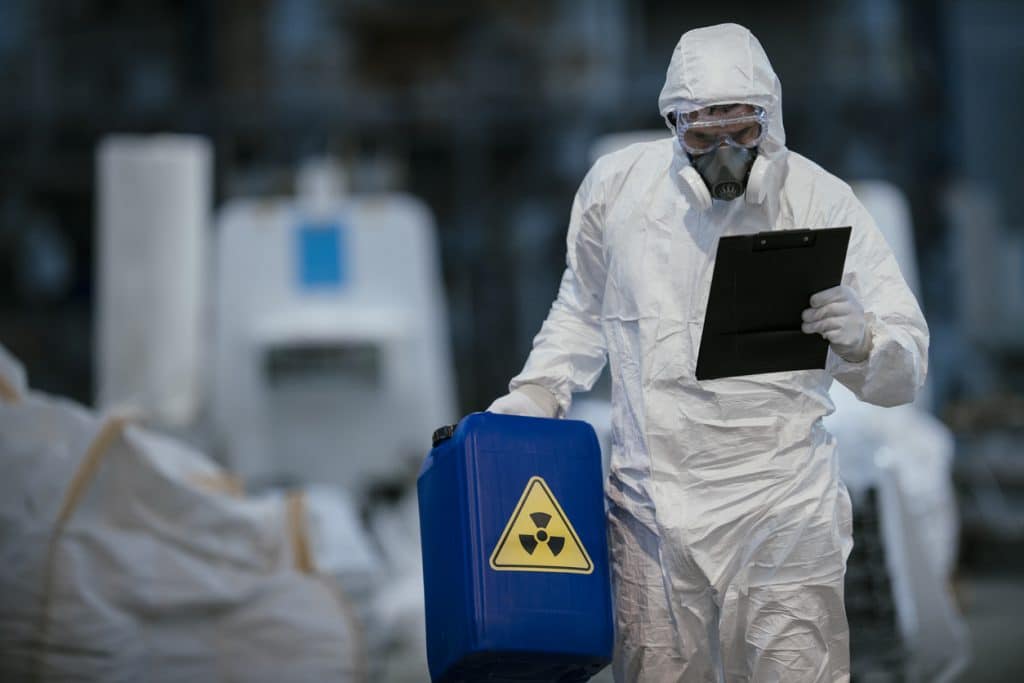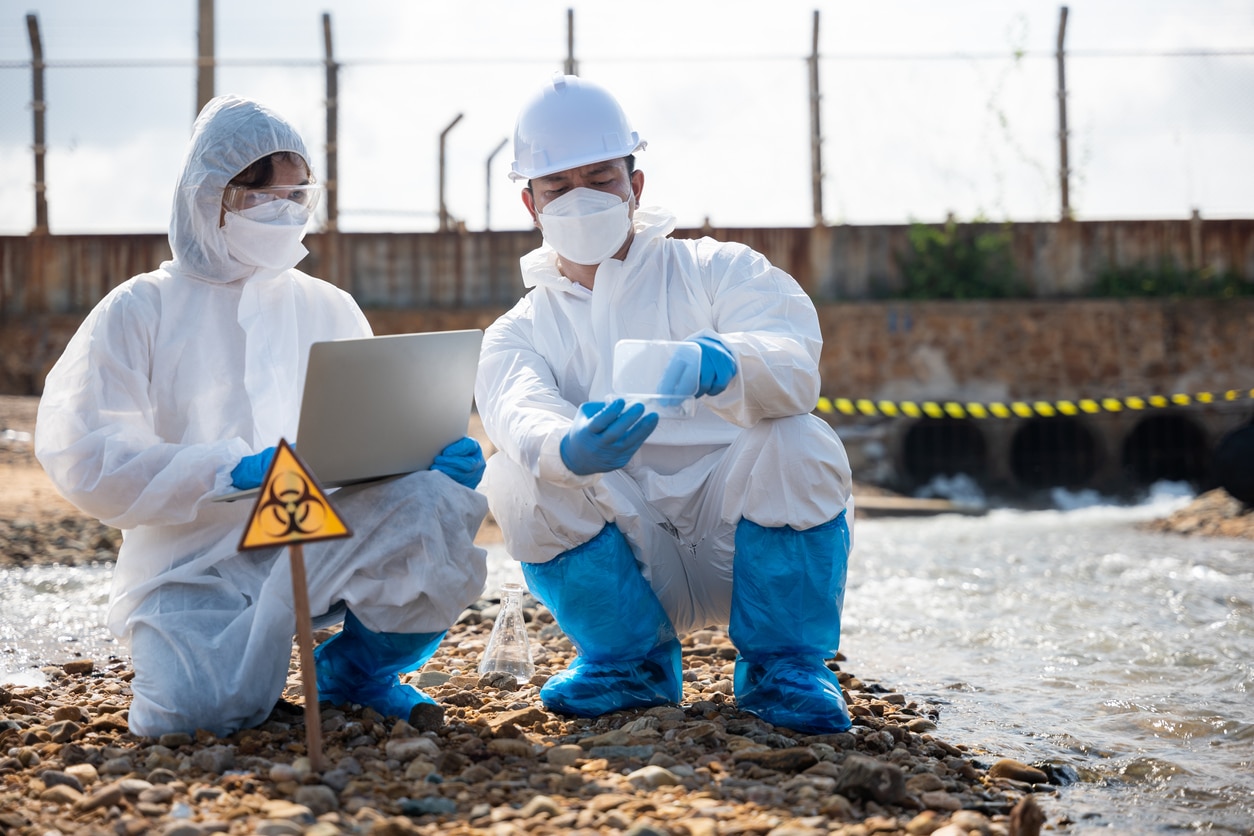Imagine being in a situation where hazardous materials, toxins, or infectious agents surround you. You need to take every precaution to protect yourself from potential harm. That is where Hazmat suits come into play. This comprehensive guide will delve into everything you need to know about Hazmat suits, from their purpose and types to their importance in hazardous materials assessment. Whether you are a hazardous materials consultant or simply curious about these specialized garments, read on to become well-versed in the world of Hazmat suits.
The Purpose of Hazmat Suits
Hazmat suits, short for Hazardous Materials Suits, are critical in ensuring the safety of individuals working in environments where they may come into contact with hazardous substances. These suits protect wearers from various dangers, including chemical, biological, radiological, and nuclear (CBRN) hazards.
Ensuring Safety in Hazardous Environments
Hazmat suits are essential to personal protective equipment (PPE) used by hazardous materials consultants, first responders, healthcare professionals, and laboratory workers. Their primary purpose is to create a barrier between the wearer and the hazardous materials they are exposed to, minimizing the risk of contamination and injury.

Types of Hazmat Suits
Hazmat suits come in various types, each designed to protect against specific hazards. Understanding the differences between these types is crucial for selecting the right suit for a particular job.
#1: Chemical-Protective Suits
Chemical-protective suits shield the wearer from exposure to hazardous chemicals, including acids, bases, solvents, and toxic gases. They are typically made from neoprene, butyl rubber, or Tychem, which offer excellent chemical resistance.
#2: Biological-Protective Suits
Biological-protective suits, often called biohazard suits, are designed to protect against biological agents like viruses and bacteria. These suits are a staple in healthcare settings, where professionals may encounter infectious diseases. They are usually made from impermeable materials like Tyvek or polyethylene.
#3: Radiological-Protective Suits
Radiological-protective suits are used when working with radioactive materials. These suits are made from specialized materials that protect against radiation exposure, such as lead-lined suits. They are commonly used in nuclear power plants and during radiological emergencies.
#4: Firefighter Hazmat Suits
Firefighters also require specialized Hazmat suits to protect them from chemical and thermal hazards encountered during firefighting operations. These suits are constructed to withstand extreme temperatures while providing chemical resistance.
Hazmat Suit Accessories
In addition to the main Hazmat suit, various accessories can enhance safety and comfort. These include respirators, gloves, boots, hoods, and communication devices, often integrated into the suits to ensure seamless operation in hazardous environments.
Hazmat Suit Components
To better understand how Hazmat suits function, let’s break down their key components:
#1: Outer Shell
The outer shell of a Hazmat suit is the first line of defence against external hazards. It is made of a durable, impermeable material that prevents hazardous substances from reaching the wearer’s skin and clothing.
#2: Inner Layers
Beneath the outer shell, Hazmat suits typically have multiple layers of protection. These layers may include a moisture barrier, a chemical barrier, and an inner lining for comfort and moisture management.
#3: Seals & Closures
Hazmat suits feature a variety of seals and closures to ensure a complete seal and prevent any potential entry points for hazardous materials, including zippers, hook-and-loop fasteners, and integrated gloves and boots.
#4: Respiratory Protection
Many Hazmat suits have integrated respiratory protection, such as a full-face mask or a powered air-purifying respirator (PAPR). It ensures the wearer has a continuous clean air supply in contaminated environments.
Hazmat Suits in Hazardous Materials Assessment
A hazardous materials consultant’s job involves assessing and managing the risks associated with hazardous materials. Hazmat suits are vital to such work to conduct assessments and respond to incidents safely.
#1: Protection During Assessments
You must be prepared to enter contaminated areas when you’re called to assess a potentially hazardous situation. Hazmat suits are your armour, shielding you from chemical, biological, and radiological threats. This protection allows you to gather critical data and make informed decisions without risking your safety.
#2: Responding to Incidents
In the event of a hazardous materials incident, rapid response is essential. Hazmat suits are designed for quick donning and can be the difference between life and death when time is of the essence. As a hazardous materials consultant, your ability to respond swiftly and effectively can mitigate the impact of such incidents.
#3: Safe Handling of Hazardous Materials
In your line of work, you’ll often handle hazardous materials directly. Hazmat suits provide a crucial layer of protection during these tasks, reducing the risk of exposure and contamination. This protection extends to both planned assessments and emergencies.
Choosing the Right Hazmat Suit For a Hazardous Materials Assessment
Selecting the appropriate Hazmat suit is a critical decision for hazardous materials consultants. The choice depends on various factors, including the type of hazard you expect to encounter, the duration of exposure, and the comfort and mobility required for the task.
#1: Consultation & Assessment
Before every job, it’s essential to conduct a thorough risk assessment. Consult with your team and assess the specific hazards involved. This step will help you determine the level of protection required and the appropriate Hazmat suit for the task.
#2: Fit & Comfort
A well-fitted Hazmat suit is crucial for comfort and safety. Ill-fitting suits can restrict movement and lead to fatigue during long assessments. Ensure you are properly measured and fitted for your Hazmat suit to guarantee maximum protection and comfort.
#3: Maintenance & Inspection
Regular maintenance and inspection of Hazmat suits are imperative to ensure they remain effective. These include checking for wear and tear, damaged seals, and the integrity of the suit’s materials. Follow manufacturer guidelines for maintenance and replacement.
Hazmat Suits: Integral to a Hazardous Materials Assessment
In a field with high stakes, Hazmat suits offer a layer of security that allows you to assess and manage risks effectively. So, whether conducting routine assessments or responding to emergencies, never underestimate the importance of a well-chosen Hazmat suit – your safety depends on it. Stay informed, stay protected, and continue making a difference in hazardous materials assessment as a dedicated and responsible professional.
Alberta Safety & Environmental Services (ASE Services) is one of the most reputable providers of Hazardous materials assessment and hygiene inspection services—including asbestos, lead, mould, mercury, and silica detection, as well as industrial hygiene testing for grow ops and other facilities. With a background in Alberta’s Occupational Health & Safety Commission and professional project management skills, our qualified staff can provide reliable handling of air quality and industrial hygiene from initial industrial inspection all the way to remediation programs. Whether just for a permit, or in-depth air quality control, we can help. Feel free to reach out and secure air quality and hygiene requirements for your building.
